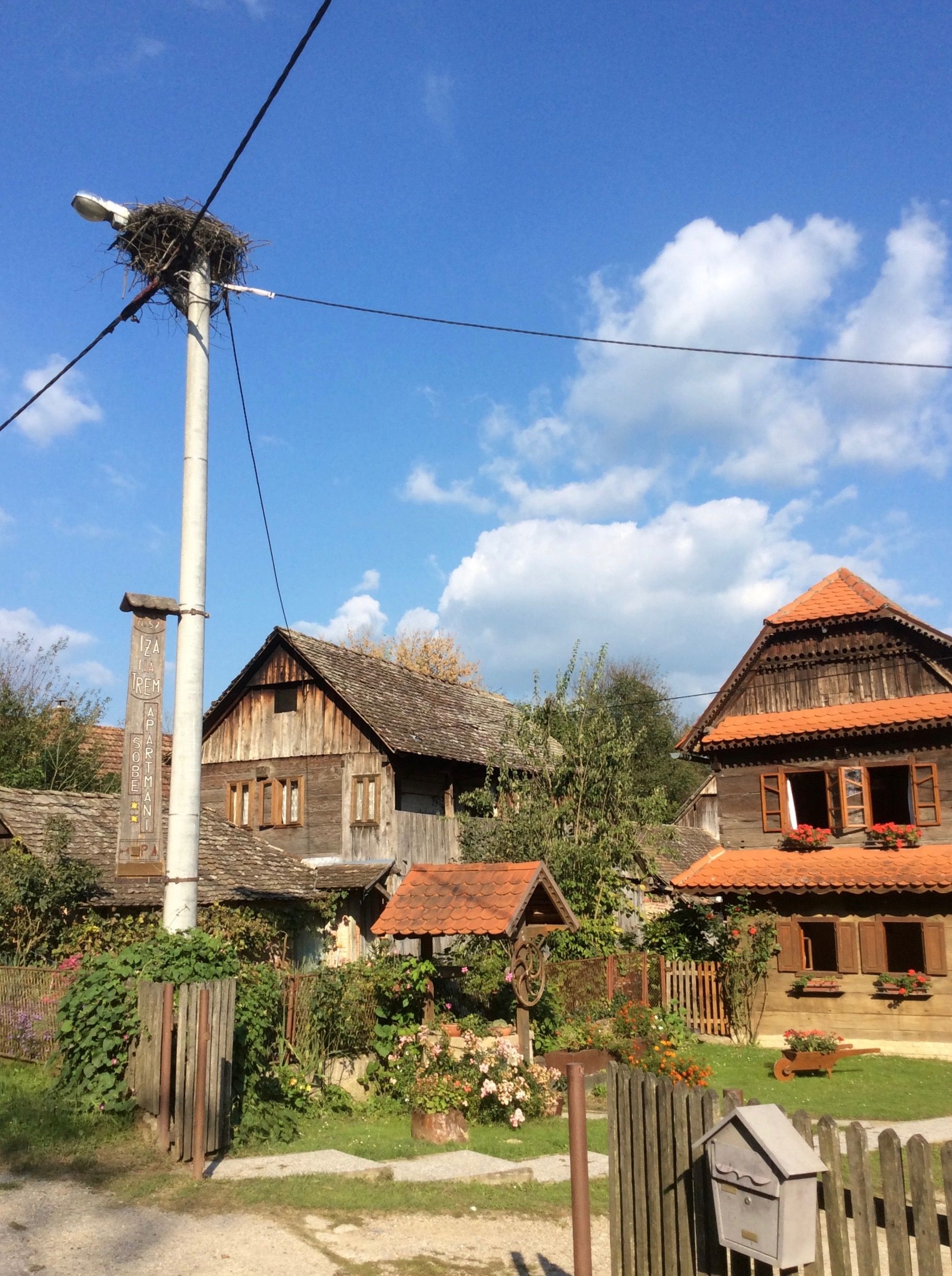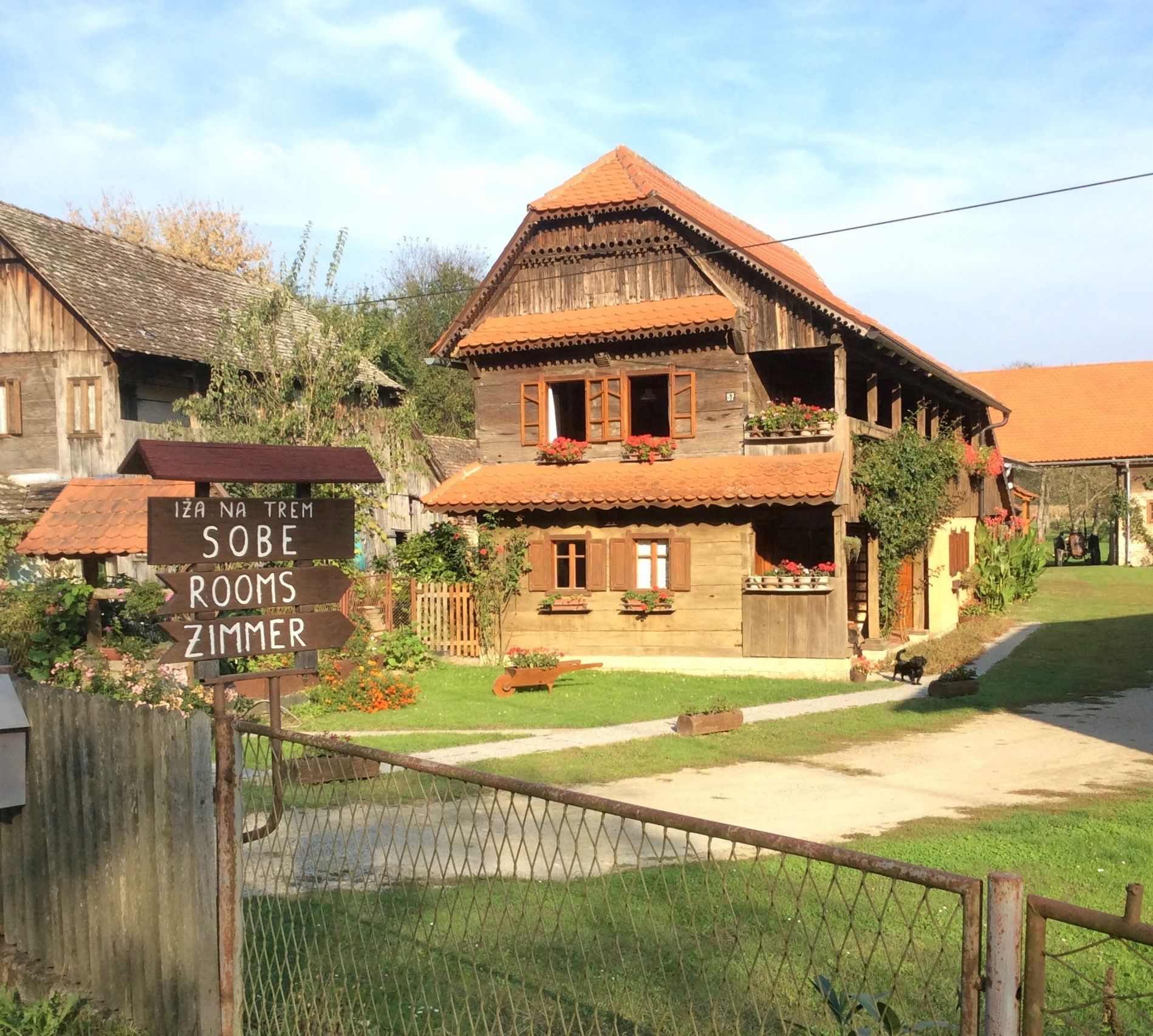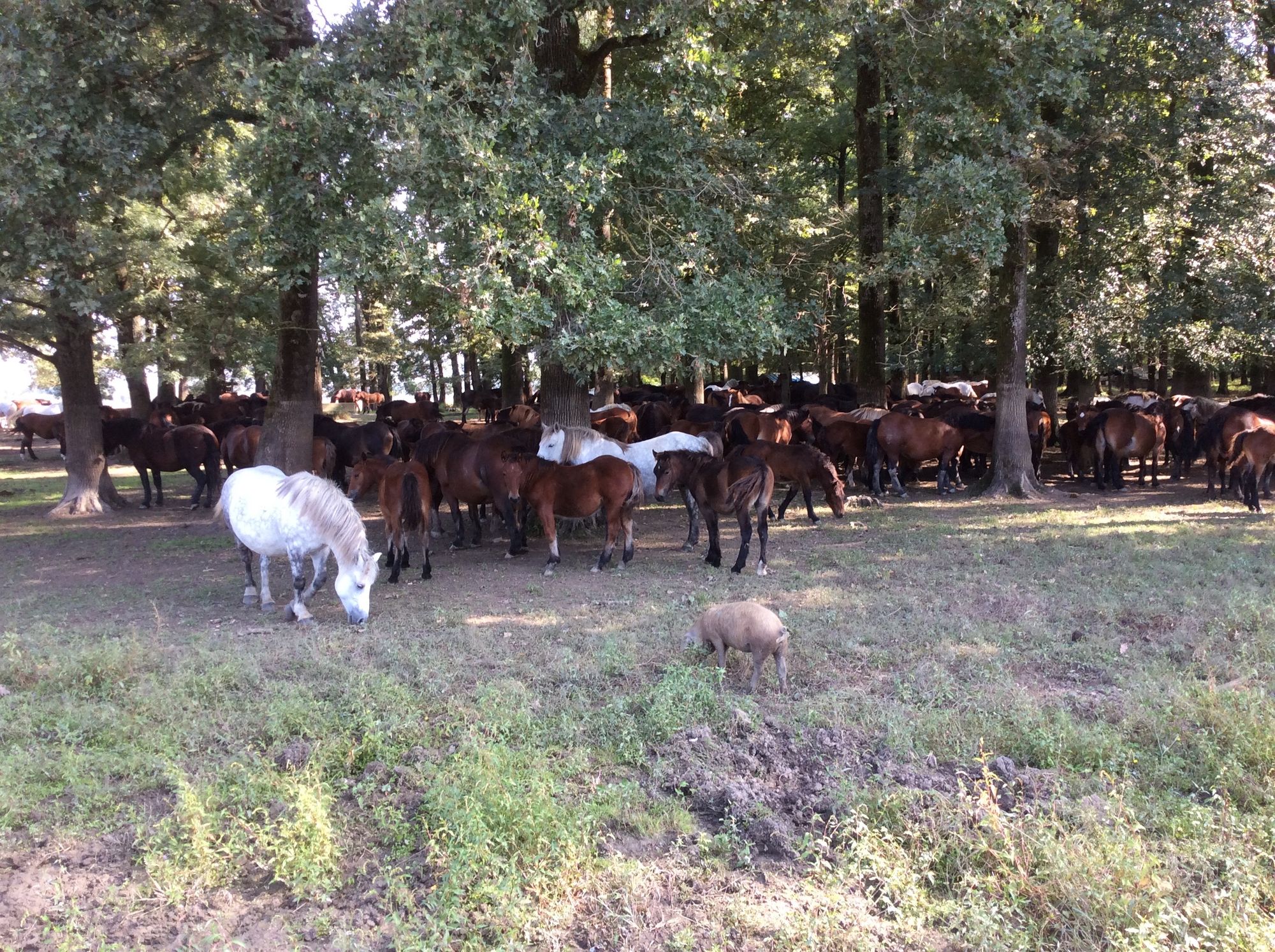Fairytale houses and big twiggy stork nests... Two good reasons to get into the countryside in Croatia.
The tiny community of Čigoč, pronounced Chee-gotch, had been awarded the title of European Stork Village, plus it's known for its characteristic old wooden houses, so we were on a mission to visit.

In September 2016 we landed in the Croatian capital of Zagreb and were told at the bus station there was no public transportation to Čigoč, just a few hours away. We persisted and eventually found a bus to Sisak, where we could wait for another bus to take us to our destination.
In no time we were on bikes exploring the single street of the idyllic village of Čigoč, deserted except for a herd of cows.



The road was lined on one side with the charming wooden houses I was hoping to see, beautiful Hansel and Gretel houses made of 200 year old oak timbers, and mostly without nails. Built tall to offer safety from the floods that arrived regularly in this ancient flood plain of Lonjsko Polje, the largest protected wetlands in Croatia. We did our best to pronounce these names but our retention was never more than a few minutes.
The oldest houses have no chimneys since fireplaces were vented into the attic where the smoke was used to cure ham, sausage and cheese. Nothing wasted in those old days, not even smoke.



Some homes were inhabited but many were badly deteriorated, abandoned and swallowed up by vegetation. It was not a thriving area where people could afford to restore the historical buildings their village was known for. We noticed only two B&Bs and one restaurant.


And about the storks?
Well our timing was all wrong. The big birds had left for their annual holiday to South Africa and not a single pair were to be seen. We made do with counting all the bulky stick nests we could find, perched high on roofs and poles, which the birds would return to the following spring.


We stayed several days at "IZA NA TREM" a working farm and and a pastoral B&B, where a friendly dog slept at our doorstep, cats and rabbits and chickens roamed freely in the yard, and the friendly owner built a wood fire in our fireplace before she brought in our hot breakfast. Tourism at its best!


(Note: We don't always have this kind of luck. We've stayed in a few crummy places over the years, with equally crummy weather. The possibility of disappointment makes the pleasure all the sweeter.)

It's not just the houses in this area that are a gift from the past. This is one of the last regions of Europe where traditional pasturing systems are used, old breeds of cows, horses, and pigs are preserved and all graze together in the lowlands, in a truly unique piece of natural heritage.




We biked through several quiet villages and crossed the Sava River on a small ferry, and when we had a flat tire emergency, found a farm family more than willing to help. They were friendly and curious like people are whose lives aren't overrun with too many tourists. Only one man spoke a bit of English, the others not at all, but people always seem to know the word Canada and react with a big smile.


For many generations people have lived here on the banks of the Sava River, in harmony with nature, using wise practises of wetland management and conservation. Sadly, young people are migrating to the cities, the population is dwindling, and the survival of this part of Croatian rural culture is endangered.
We left Čigoč on a misty morning on a school bus with this little girl who said she was the only student left in her class.

If you ever find yourself in Croatia (you never know!) and have a hankering to see storks, this peaceful and interesting rural area is worth a visit for sure. Renting a car would be convenient, and try arrive in early spring for stork viewing!


